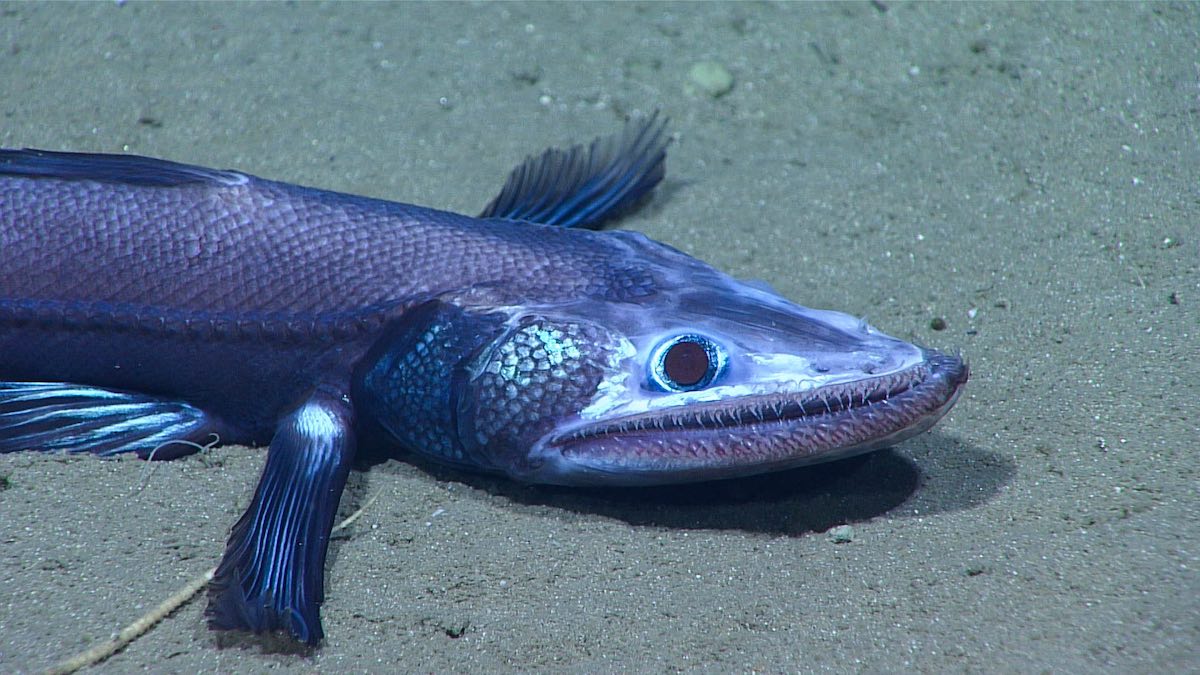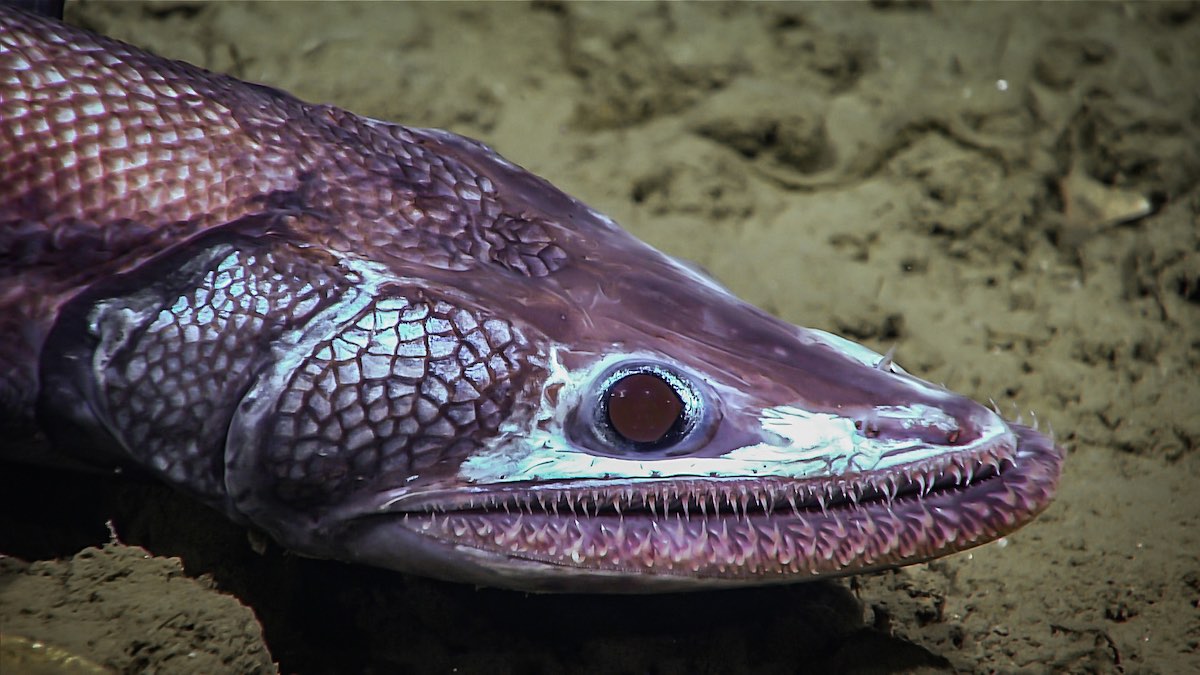Why You Should Love the Deep-Sea Lizardfish
Deep-sea lizardfish are straight out of a Tim Burton movie

What would you do if you came face-to-face with a deep-sea lizardfish? If we’re honest with ourselves, the answer probably includes running, screaming and/or fainting. With their massive, protruding teeth and dark eyes, these guys don’t exactly seem inviting. But these deep-sea dwellers are definitely worth learning more about! And who knows, you might end up loving that nightmarish mug after all.
Deep-sea lizardfish (Bathysaurus ferox) are members of the family Bathysauridae along with the highfin lizardfish (Bathysaurus mollis). Although they look similar, they’re different than the other “lizardfishes” that you might be familiar with that live in tropical and subtropical coastal waters. Deep-sea lizardfishes (unsurprisingly) live in the deep sea. They’re found at depths exceeding 3,000 feet, which is in the “midnight” or aphotic zone. No sunlight is able to penetrate such deep waters—the animals who live there must adapt to living in darkness.
They’re found in deep waters around the world, except for around the poles. But you don’t need to be at high latitudes to get cold water—deep water is cold enough! Deep-sea lizardfish live in temperatures around 38 degrees Fahrenheit. They grow to about 15-23 inches long, but the largest recorded deep-sea lizardfish was 33 inches long and weighed 15 pounds.

The deep-sea lizardfish’s most distinctive feature is its searing teeth. They are apex predators, meaning they are at the top of the ecosystem food chain. In fact, deep-sea lizardfish are one of the deepest-known top predators, and will eat pretty much anything it comes across. They are ambush predators, meaning they wait on the sea floor with their mouth open, patiently waiting for a meal to swim by. Since prey can be few and far between in the deep sea, the deep-sea lizardfish isn’t picky: it will eat other fish, crustaceans and even other deep-sea lizardfish.
This sparse environment also means the deep-sea lizardfish can’t be picky when it comes to finding a mate. They have evolved an interesting strategy to combat this: Deep-sea lizardfish are synchronous, or simultaneous, hermaphrodites. This means they can produce both male and female gametes at the same time. That way, they are able to mate with any partner they come across, rather than having to potentially wait for one of the opposite sex.
Hopefully, learning more about deep-sea lizardfish has given you a new appreciation for these big-toothed, sex-switching, stealth-attacking predators. And remember, if you’re looking for more fish to fuel your nightmares, look no further than the deep sea.